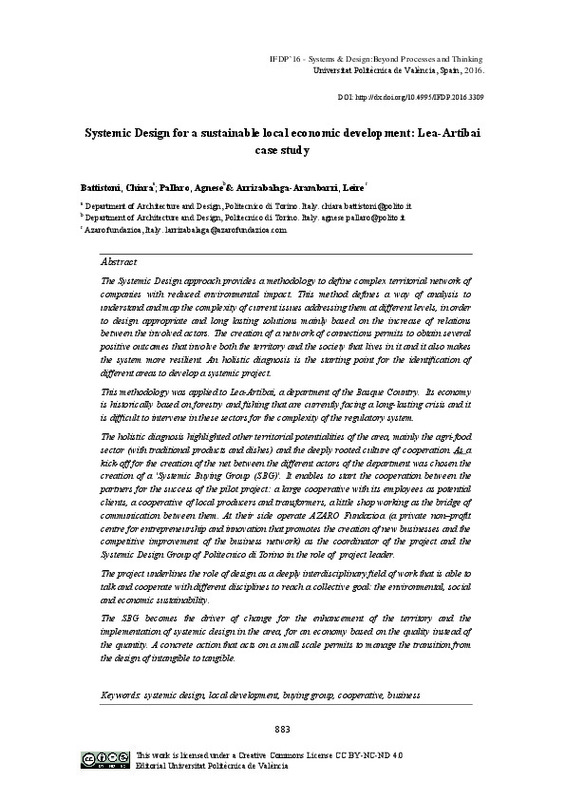JavaScript is disabled for your browser. Some features of this site may not work without it.
Buscar en RiuNet
Listar
Mi cuenta
Estadísticas
Ayuda RiuNet
Admin. UPV
Systemic Design for a sustainable local economic development: Lea-Artibai case study
Mostrar el registro completo del ítem
Battistoni, C.; Pallaro, A.; Arrizabalaga Arambarri, L. (2016). Systemic Design for a sustainable local economic development: Lea-Artibai case study. En Systems&design:beyond processes and thinking. Editorial Universitat Politècnica de València. 883-900. https://doi.org/10.4995/IFDP.2015.3309
Por favor, use este identificador para citar o enlazar este ítem: http://hdl.handle.net/10251/87808
Ficheros en el ítem
Metadatos del ítem
| Título: | Systemic Design for a sustainable local economic development: Lea-Artibai case study | |
| Autor: | Battistoni, Chiara Pallaro, Agnese Arrizabalaga Arambarri, Leire | |
| Fecha difusión: |
|
|
| Resumen: |
[EN] The Systemic Design approach provides a methodology to define complex territorial network of
companies with reduced environmental impact. This method defines a way of analysis to
understand and map the complexity ...[+]
|
|
| Palabras clave: |
|
|
| Derechos de uso: | Reconocimiento - No comercial - Sin obra derivada (by-nc-nd) | |
| ISBN: |
|
|
| Fuente: |
|
|
| DOI: |
|
|
| Editorial: |
|
|
| Versión del editor: | http://ocs.editorial.upv.es/index.php/IFDP/IFDP/paper/view/3309 | |
| Título del congreso: |
|
|
| Lugar del congreso: |
|
|
| Fecha congreso: |
|
|
| Tipo: |
|








